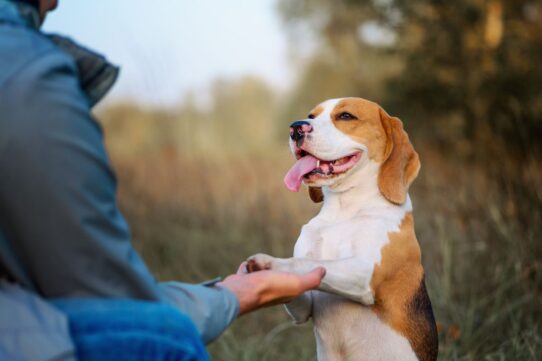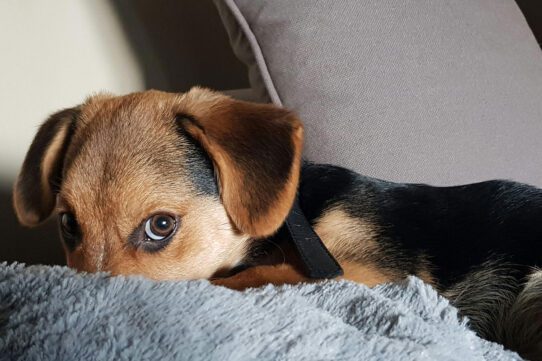Puppy crate training is a process of teaching your puppy to feel comfortable and safe in its crate. It’s an essential part of their development and will help them feel secure in their new home.
Why Is Puppy Crate Training Important?
Puppy crate training is perhaps one of the most important things you can do for your new puppy. A crate provides a safe, secure place for your puppy to stay when you can’t supervise them and can help prevent destructive chewing, potty accidents, and other undesirable behaviors.
Crate training can also be a great way to ensure your puppy gets enough exercise and socialization. When used properly, a dog crate can be a cozy, comfortable space for your puppy to relax.
Here are some of the many benefits of crate training your puppy:
1. A crate can help prevent destructive chewing.
If your puppy is left unsupervised, it may start chewing on furniture, shoes, or other household items. A crate can help prevent this by giving your puppy their own safe space to stay in when you can’t watch them.
2. A crate can help prevent potty accidents.

If your puppy has free reign of the house, they may have accidents on your floor or carpet. A crate can help prevent this by giving your puppy a designated potty spot.
3. A crate can help socialize your puppy.
If you take your puppy out in public, it’ll be exposed to new people, places, and experiences. This can help socialize your puppy and make him more comfortable around new things.
4. A crate can help exercise your puppy.
If your puppy is crated while you are away, it’ll need to move around to stay comfortable. This can help prevent boredom and help your puppy get some exercise.
5. A crate can help reduce stress.
If your puppy is anxious or stressed, a crate can provide a safe, secure place for them to relax. This can help reduce your puppy’s stress levels and make him more comfortable in new situations.
Puppy crate training is essential in raising a happy, healthy puppy. A crate can provide many benefits for you and your puppy and help make your home more peaceful.
Tips for Crate Training Your Puppy
Now that you know the importance of puppy crate training, we can proceed to the “why.” We’ve gathered some helpful tips to help you train your puppy to feel more comfortable in its crate.
Get the Right Crate for Your Pup
When crate training your puppy, it’s important to choose the right crate for their individual needs. There are a variety of different crate sizes and styles available on the market, so it’s important to do your research to find the best option for your pup.
Here are a few things to keep in mind when choosing a crate for your puppy:
Size: The dog crate should be big enough for your puppy to stand up, turn around, and lie down comfortably. If the dog crate is too small, your puppy will feel cramped and uncomfortable. If the dog crate is too large, your puppy may be able to pee or poop in one corner of the crate and still have plenty of room to sleep in the other.
Style: There are two main types of dog crates available on the market – wire crates and plastic crates. Wire crates are typically less expensive and offer more ventilation, but they can be more difficult to clean if your puppy has accidents. Plastic crates are more expensive but offer a more den-like environment for your puppy, which can make them feel more secure.
Consider the Location of the Crate

One of the most important things to consider when crate training your puppy is the location of the dog crate.
The dog crate should be placed in an area of the house where the puppy can see and hear the family but is not in the way. It should also be placed in an area that is not too hot or too cold.
You should also make sure to choose a location that’s calm and quiet. This way, your puppy will not feel too anxious when staying inside the crate.
Allow Your Dog Enough Time to Explore the Crate
One of the most important things to remember when crate training your puppy is to give them enough time to explore the crate. Allowing your pup to explore will help them to feel more comfortable in their new environment and will make it easier for your pup to be crate trained.
Here are some tips to help you allow your puppy enough time to explore their crate:
- Introduce your puppy to the crate gradually. Put their food and water dish inside the crate and let them eat and drink in there. This will help them to associate the crate with positive things.
- Let your puppy explore the crate on their own. Don’t force them inside. Let them go in and out as they please.
- Once your puppy is comfortable with the crate, you can start closing the door for short periods of time. Start with just a few minutes and gradually increase the time.
Don’t Use the Crate as a Punishment
Punishing your puppy by confining them to a crate is not an effective way to train them. In fact, it can actually make things worse.
If your puppy is acting out, confining them to a crate will only serve to make them more anxious and stressed. This can lead to further behavioral problems down the road.
Instead of using the crate as a punishment, try using it as a tool to help your puppy learn how to behave. Use positive reinforcement to reward your puppy when they behave well and provide them with plenty of opportunities to socialize and exercise.
Final Thoughts
Puppy crate training can be an effective way to potty-train your puppy and help them get used to living in your home. It’s important to crate train your puppy slowly and patiently, starting with short periods in the dog crate and gradually increasing the amount of time they spend in it. With proper training, your puppy should be able to happily and safely stay in its crate.
Get your own puppy from Puppygram. We have the cutest puppies for sale in Louisville, KY, and Indianapolis, IN. Puppygram was created to make the purchase of a healthy puppy simple and easy. Reserve a puppy now!




